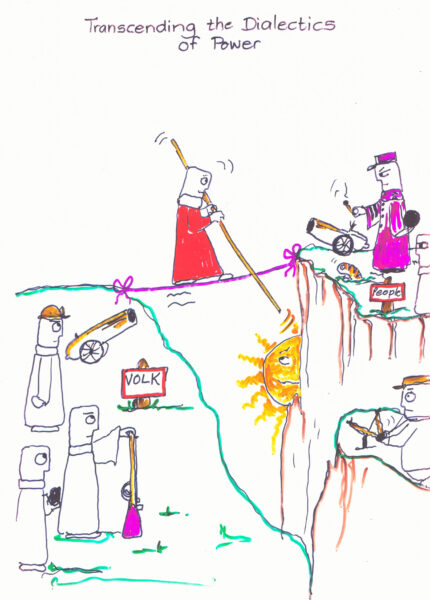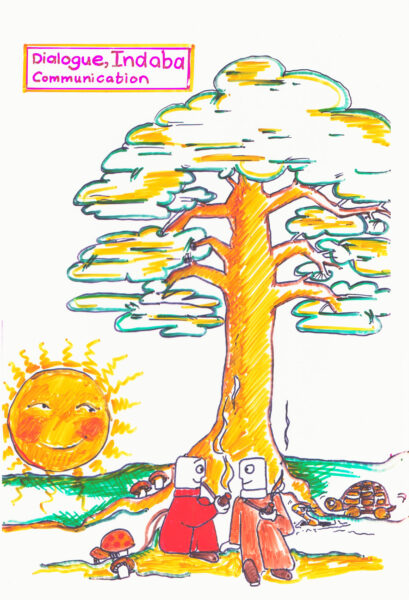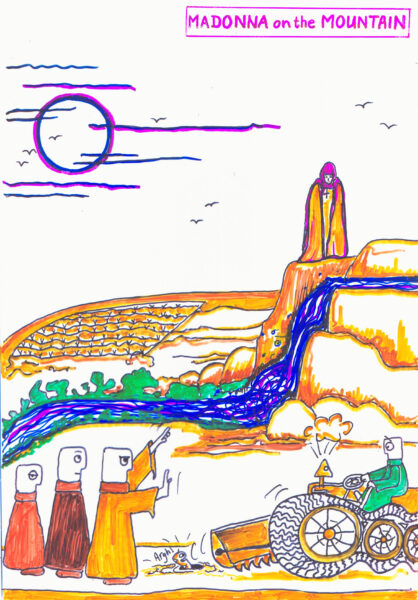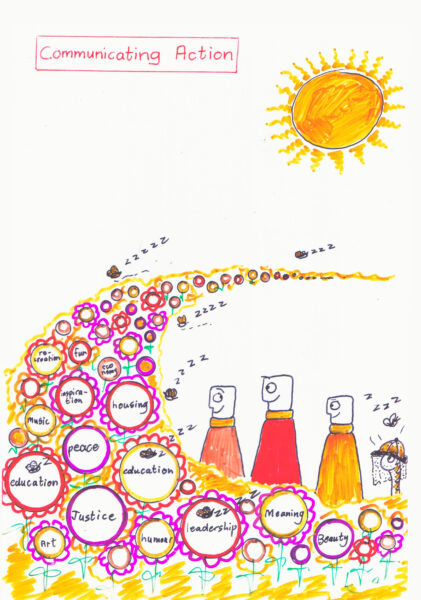biomatrix art in science gallery
Biomatrix theory is unique in using a simple graphic alphabet with which to illustrate the theory and its complex concepts. This inspired us to explore the relationship of art (beauty) and science (truth) even further in the quest of raising consciousness about the need to redesign humanity’s legacy systems in all areas of life – cultural, economic and political – and make them sustainable and beneficial to all stakeholders.
Science speaks to the rational mind, while art fascinates the emotions. Their integration is powerful. Art takes us to places which the rational mind cannot reach, while science grounds the flights of imagination in theoretical understanding and practical application. Their integration also fuels passion (Latin for suffering) and enthusiasm (Greek meaning God within). We need passion for rising up against problems and enthusiasm for intuiting creative solutions to deal with them.
We look forward to your participation and for meeting you at our next Biomatrix Online Vernisage.
(Please submit your email if you want to be invited).
exhibition 1: biomatrix graphic alphabet
exhibition 2: biomatrix theory in graphics
exhibition 3: biomatrixjam
exhibition 4: postcards from the future
exhibition 5: strategies of an alternative revolution
ethos of the gallery
BiomatrixWeb aligns itself with the tradition of
- “One seeing is worth a thousand tellings.” (Chinese Proverb)
- “Everything you can imagine is real.” Pablo Picasso
- “Art without Science is Nothing.” (Latin Proverb)
- “To have one virtue is to have them all.” (Greek Proverb)
- “Poverty is not a lack of things but a lack of beauty.” (Persian Proverb)
- The emperor of ancient China sent his emissaries to the provinces to listen to their music in order to find out about their state of development.
As futurists we follow:
- “The future is created by default or design.” (BiomatrixWeb)
- “Taking the new from the old.” (Chinese Proverb)
- “A visual culture is taking over the world …where visual narrative is overwhelming literary narrative.” (John Naisbitt, Mind Set, 2006, p113)
As change managers we learned:
- What we cannot imagine, we cannot create.
- “The pen is mightier than the sword.” (Edward Bulwer-Lytton)
- The synergy between the wise (scientists) and wild (artists) can reinvent the world.
- “Drinking a bowl of green tea, I stopped the war.” (Zen telegram by Paul Reps)
history of the gallery
The Biomatrix Art in Science Gallery is the outflow of a series of developments:
- Elisabeth Dostal was always interested in the relationship of art, science and consciousness. She met some inspirational teachers along the way (a special thanks to the late Fritz Goffitzer for outlining the laws of aesthetics) who encouraged her in pursuing this integration.
- Anacreon Cloete invented the Biomatrix Graphic Alphabet and recognized its significance in highlighting the simplicity that underlies the complexity of a scientific theory and its concepts.
- Ryan Daynes designed the graphic alphabet and embraced the challenge of making each element and combination of elements aesthetically pleasing, as well as scientifically correct.
- Maciej Soltynski suggested the inclusion of pictures for making our e-courses more interesting.
- Hagar Graiser proposed surrealism as a suitable means for illustrating the complex systemic concepts and their quality of emergence beyond what can be explained in words.
- Hagar invented the Postcards from the Future as a social networking strategy for prompting change.
- Elisabeth and Hagar prototyped the use of pictures in jamming and for depicting the problems and solutions of an industry supply chain or of a societal issue.
- David Jicha built our online gallery on a shoestring budget, financed by angel investor Pavel Dostal.
- A failed cooperation with an art school made us aware of the importance of democratising art (everyone is capable of and should be involved in artistic expression).
- The (to us as scientists) unexpected success of the Biomatrix Art in Science Gallery and its recognition by the art world reinforces our belief that art contributes to the understanding of science, as well as the transformation of social systems.









